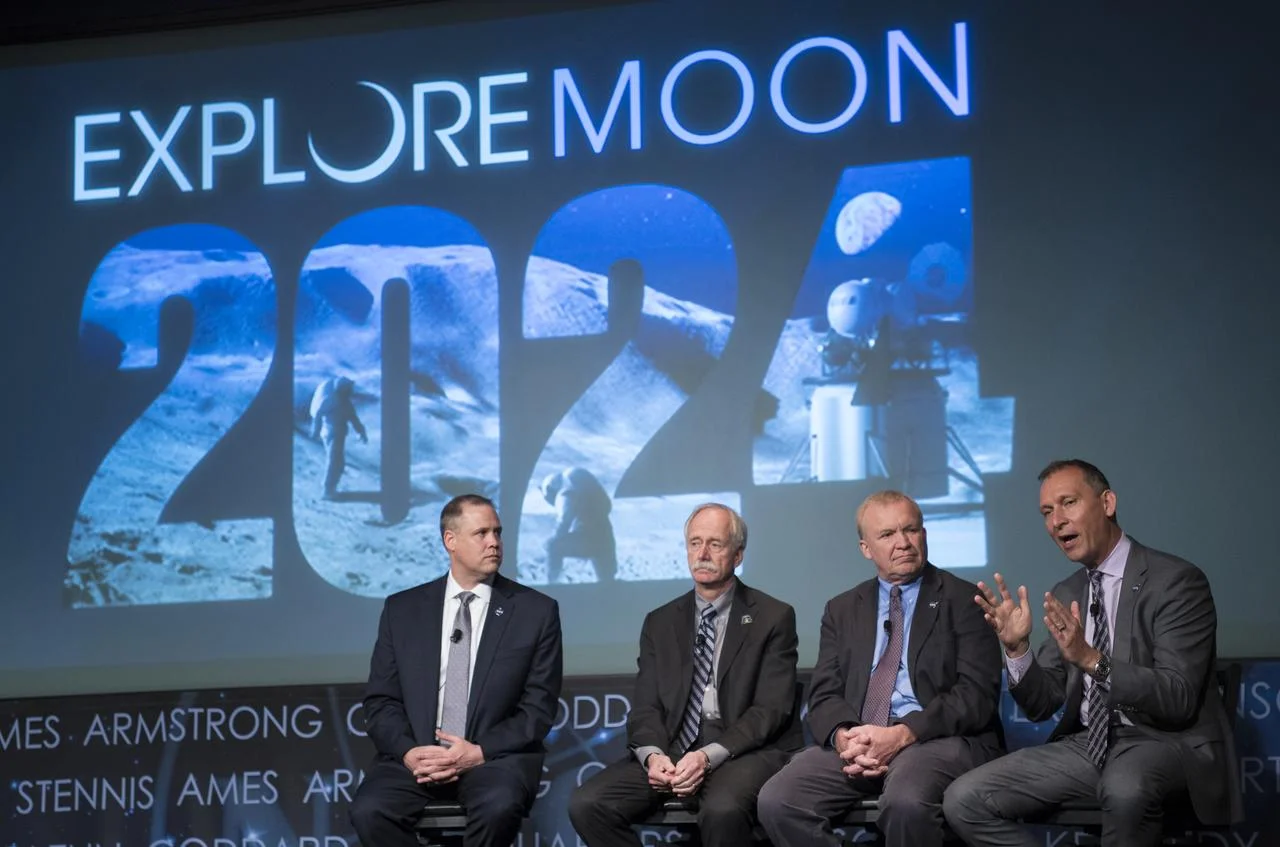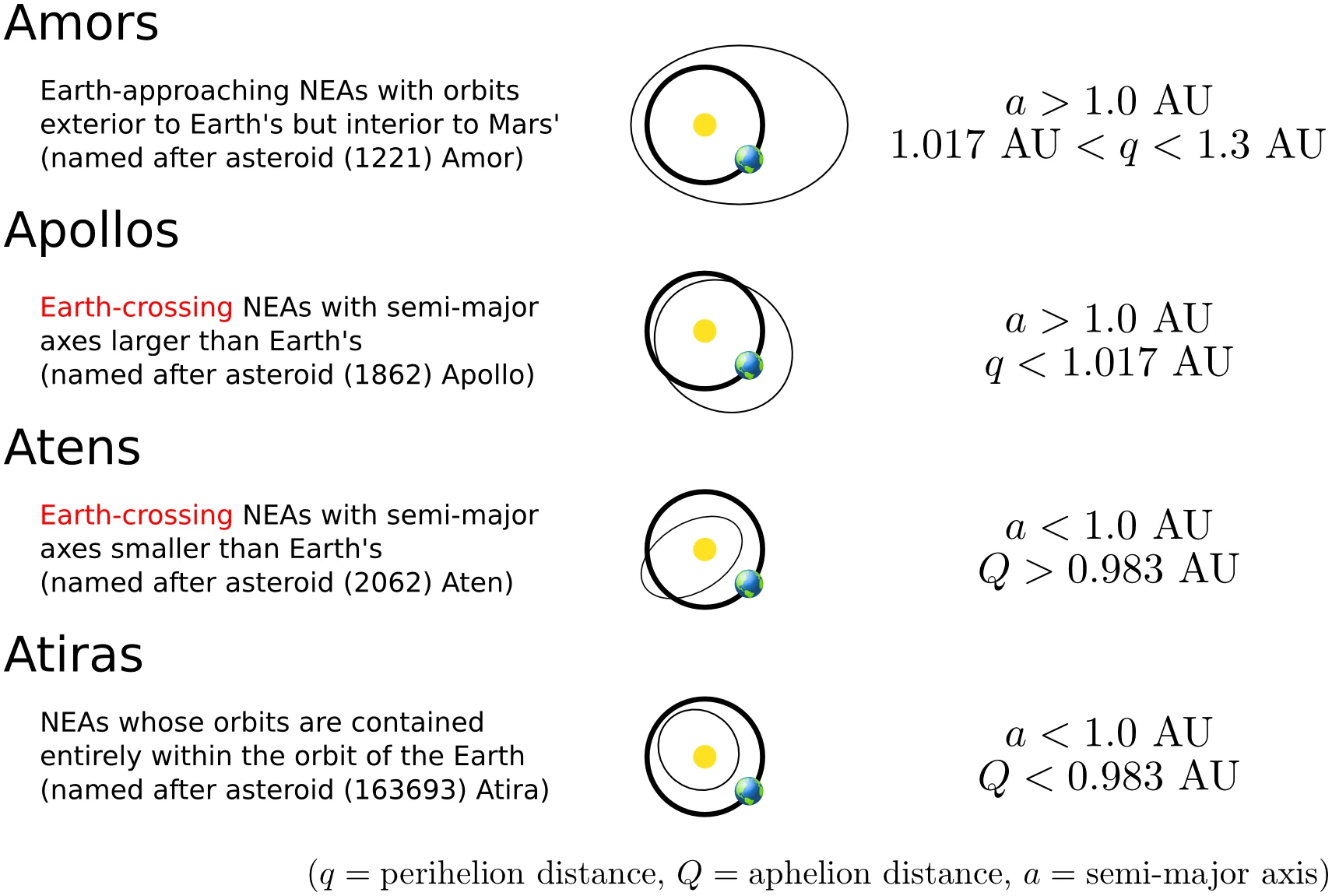The SLS Saga: 2019 Summer Project Update
The Last NASA Town Hall for Mr. William Gerstenmaier, second from left (Courtesy of NASA)
“Restlessness is discontent and discontent is the first necessity of progress”
***2019’s summer update on the SLS Program. For additional posts, please visit the SLS Saga Overview microsite here.***
While the commercial Outer Space sector has continued to strive in 2019, much has happened in the governmental space as well. For instance, the SLS Program has experienced some direct developments this year, and several NASA policy and personnel changes could indirectly impact the program as well. Since it’s been awhile since I last provided an update on this larger-than-life heavy-duty rocket, I will use this post to give a rundown on these latest changes to the program in the ongoing saga that is the SLS Program.
New Helm for NASA’s Human Exploration Program
Earlier this year and coming as a shock to many, NASA administrator Bridenstine decided to replace and reassign William Gerstenmaier, NASA’s associate administrator for Human Exploration. A career employee at NASA, Gerstenmaier started as an engineer and worked his way up the chain in this space agency over the last 42 years. While highly respected in the agency, Gerstenmaier lost Bridenstine’s confidence primarily due to the continuing ongoing delays in the SLS Program, which was magnified by Trump administration’s goal in accelerating a manned return to the Moon to 2024.
Gerstenmaier’s replacement, Ken Bowersox, a former NASA astronaut, will have big shoes to fill. Administrator Bridenstine is hoping that this new director of human spaceflight will help to jumpstart several SLS-related initiatives that have been seemingly stuck in the mud over the past few years. With a sense of urgency, Bowersox believes he is up for the challenge and announced that “if we don’t shoot for [a return to the Moon by] 2024 we have zero chance. Our attitude is to get as much of this going as we can – to move as fast as we can, as long as we can.” However as a new administrator, Bowersox’s lack of political and agency clout is leading many to doubt whether Bowersox will be able to quickly effect the essential changes that are needed to meet the accelerated timeline in a sprawling and slow-moving bureaucracy.
Returning to the Moon by 2024
Earlier this year, the Trump administration, via Vice President Pence, announced that United States will send the next man and the first woman to the Moon by 2024. Named Project Artemis, this ambitious program is a part of NASA’s grand plan to land on Mars by using the Moon as the proving grounds. Since the SLS Program is an integral component of this Moon2Mars Program, any acceleration in the timeline of NASA’s return to the Moon will impact the SLS Program as well.
Whether this is a feasible goal for the SLS Program is still, unlike the rocket itself, up-in-the-air. Many are expecting that the first launch of the SLS Program, via Artemis-1 (previously named EM-1) will be delayed to early 2021 from an original goal of 2020. Yet, even with such a delay, Administrator Bridenstine has affirmed that Artemis-2 (previously EM-2) will not be affected and can still launch in 2022. But on the other hand, Bridenstine has openly discussed the option of using SpaceX’s Falcon Heavy with ULA’s ICPS to return to the Moon. I would be remiss if I didn’t mention that, in that NASA townhall discussion, the administrator did caveat by noting that while there are no sacred cows-including the SLS rocket, this decision has not been fully flushed out.
My reaction to this news is simple: if NASA manages to shift the Moon2Mars Program onto privately-developed rockets, that will be the death knell for the SLS Program. But, this is nowhere near a foregone conclusion. Although the next associate administrator of the human spaceflight program is likely to be more receptive to this idea, NASA will still need to launch past strong political headwinds—there are a lot of jobs at stake—before this could become a reality.
Saved from the Cutting Board: SLS Green Run
After an idea—crazy one in my opinion—was floated about cancelling the Green Run test for the SLS rocket, NASA confirmed that the test is still on. The Green Run Test, otherwise known as a static-fire run, is a critical late-stage event in a new rocket’s development cycle in which a fully-fueled core stage is strapped to the test stand while test-fired for a full duration launch. This is a comprehensive test; it serves as an important dress rehearsal that enables engineers to fully test the rocket’s propulsion system to ensure that it is performing nominally and is ready for safe launch operations.
The test is seen by many as a critical and essential step of the SLS’s development life-cycle. However, due to the accelerated mandate of returning to the Moon by 2024, NASA planners were looking at ways to hasten SLS’s development and the Green Run test was considered to be on the chopping block. By cancelling this test, Administrator Bridenstine noted that the maiden launch of the SLS rocket can be moved up by six months. However, after NASA own safety panel, Aerospace Safety Advisory Panel, again emphasized the need for the test, it looks like cooler heads prevailed and the Green Run test will be retained.
In my opinion, this is absolutely the right move: look, when the most important internal safety group—with an acronym of ASAP no less—is telling NASA to slow down and not cut a particular test, it’s probably best to listen.
Europa Clipper Might Not Fly on SLS
For NASA’s Europa Clipper mission, an unmanned orbiter will be sent to study Europa, the smallest of the four Galilean moons circling Jupiter. This is a unique mission in which Congress has mandated that SLS must be the orbiter’s launch vehicle. The mission is tracking well and has just cleared a major review: it’s now ready for Phase C. This phase comes after a mission has cleared “Key Decision Point C,” and now NASA can set the budget and the timeline for such mission.
However, it’s looking increasingly likely that the mission will not launch on the SLS rocket. In NASA’s own budget request for FY 2020, the agency suggested using a commercial rocket for this mission to save costs. Europa Clipper is currently scheduled for launch sometimes between 2023 and 2025, so NASA still has a bit of time to convince Congress to change the SLS mandate in future appropriation bills.
Second Mobile Launcher Contract Award
In early 2018, NASA received an extra $350 million for the development of a second mobile launch platform for the SLS rocket. This was seen as a boon to this rocket as it would allow NASA to quicken SLS’s launch cadence, enabling the program to eliminate a 33-month stand-down period.
After a year-long solicitation process, NASA announced in June of this year that Bechtel National, Inc. has been selected to build Mobile Launcher 2. This will be a cost-plus-award-fee contract that is valued at $383 million. Bechtel is expected to have 44 months to complete the Mobile Launcher 2 in a period that started July 1, 2019.




